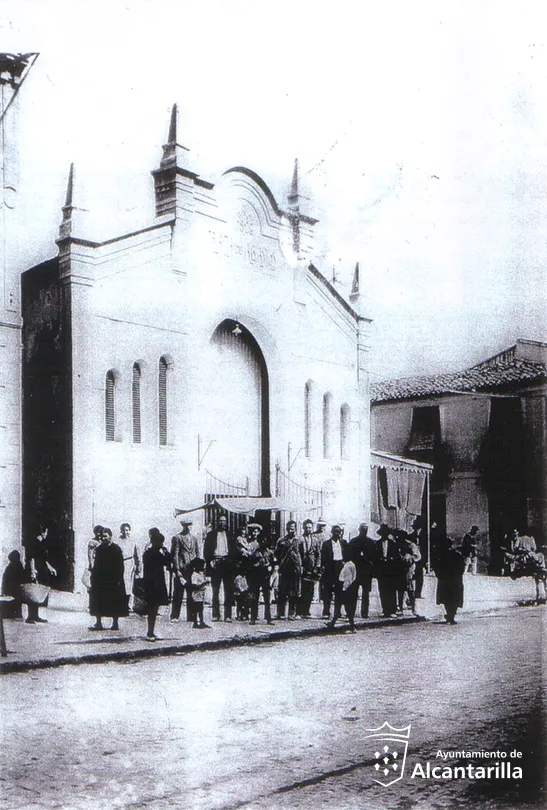
The Plaza de Abastos (market square) de San Pedro was built in 1926, as indicated on its main façade. The building was the creation of one of the most important architects of the Region of Murcia at the beginning of the 20th century, José Antonio Rodríguez.
At the beginning of the 20th century, with the new hygienic regulations, the municipal corporation considered the need to build a Plaza de Abastos, in the same place where the open-air market had been held since the end of the 19th century, for the sale of meat and fresh produce.
It is a free-standing building with a floor area of 996 m2, with two façades, main and rear, and a shed covered with a tile roof on an iron frame and a gable roof. The main façade reflects the structure of the interior, organised into three streets, with the central one with the entrance door and the cornice crowning it standing out from the rest. Many of the architectural and decorative elements used are reminiscent of the Plaza de Abastos de Verónicas in Murcia, the work of the architect Pedro Cerdán, such as the external structure of the sides, the way the façade is organised, the round arch in the main doorway and the pinnacle-shaped finials. These ornaments were intended to give prominence and prominence to a public building in the middle of the main street.
Alcantarilla was one of the pioneers in the region in the construction of this type of food market, coinciding with a period of development of the canning industry in the town. In the 1920s, important public works and infrastructures were also carried out, such as the supply of drinking water to the town and the urban development of the Calle Mayor. In 1928, Alcantarilla was part of the project of the Circuito Nacional Firmes Especiales, promoted by the Ministry of Public Works, for the paving of the cobbled paving of the Calle Mayor, under the direction of the engineer Diego Templado Martínez. A year later, the tramway disappeared.
The building of the Plaza de Abastos, one of the most interesting single-nave buildings in the Region of Murcia, was declared a listed building for its cultural relevance in 2018.

